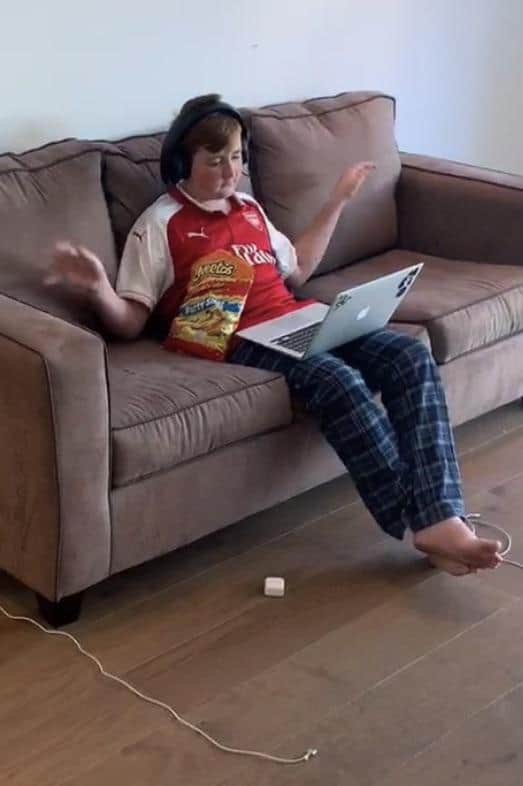
It’s Not Working
Feature photo caption: “A picture of my brother in PE class today.”
I wonder how many people within the work can admit it isn’t working. Kids can say it. Parents can say it. Academics who perhaps used to teach can say it. But can people in the field say it? And if they can say it, what is the result from this confession? Frustration? Blame? Who is open and willing and free enough to utilize this acknowledgement as a means to do things differently?
The schools have done it (and continue to do it) by replacing physical education with physical activity. They don’t need a teacher, they need space and equipment and supervision. The purpose and success of recess doesn’t get questioned like PE does. Its benefits are known and agreed upon — it releases energy, encourages play, offers socialization, and doesn’t have an expectation of an outcome. A kid can just sit in the grass and be left alone without worry or concern that something specific should be achieved or accomplished.
Instead of building from this celebrated format, PE teachers tend to downplay or ridicule it. When you constantly have to justify what you do, you tend to model your answers after the more universally accepted subjects of study: math, language, science. There is a scope and sequence that meets the standards students will be tested on. Because PE is not one of these standardized subjects, most PE teachers document student growth internally — gathering data on components of fitness or sports skills in which to demonstrate progress.
The ability to determine what you measure is Physical Education’s greatest asset.
Why then, do we keep looking at the same things?
1. It’s easier to follow tradition.
Falling in line is about survival. Don’t rock the boat, do as the others do, fit into the mechanism that is already rolling. They keep adding kids, and management of it all takes enough out of you. To create something new (and figure out how to ‘sell’ it) is exhausting, and nine times out of ten you also have practice after school.
2. Teachers are successful products of the current system.
It isn’t innate to challenge it. For the most part, PE teachers are former athletes, looking to steer kids toward the joy of being physically active. Most run into a jarring reality check when they realize young people aren’t interested in being like them. There is a negotiation that inevitably changes course design and intention (and if not, makes for a battle of wills and holds grades hostage for compliance) that may be willing to lower the bar but not blow it up. If they haven’t changed, what they see as worthwhile to know (and do) won’t either. You can’t teach what you haven’t learned.
3. We don’t value play.
Before you react in disagreement, hear me out. Can you explain what play is? Can you list out its many parts and components, and can you manipulate these variables equally, without bias toward your own likes? Outside of a given sport context, do you encourage play? What about in the weight room? How often do you stop a ‘drift from the plan’ versus encourage it? Remember, play has very little instruction, and even fewer rules. Can you follow them more earnestly than you ask them to follow you? Consider the differences between elementary and high school physical education. The younger groups excel at this. The older ones struggle.
4. We look to adults to dictate the desired outcome.
The administration, peers, researchers, Olympians, military, pro athletes, shredded bodies. All of these adults, though, don’t have a stake in your class; in the here and now of what is interesting and important. Watch children at the playground and everything is there and built in. It’s on us not to screw it up and take it out of them, and if it has, it’s our responsibility to give it back before they are cast out on their own. We are trusted to show them the way to get to a place, but perhaps we are wrong in where they should go (and thus, how to get there).
One final reflection: How did you adjust things and set up interactions during the pandemic, particularly with online PE? Were topics discussed or workouts/ activities given to do? What did the accountability look like for each? Which might have been most necessary when the world turned upside down? Was there a spark of excitement at the opportunity to engage in different things in different ways, or did you further try to force a square peg into a smaller round hole and start to hate the job?
“It’s not working” can be viewed as a criticism or an invitation. The former may shut you down further into the island of your gymnasium, the latter might look you in the face and ask you what you think. To be listened to and observed goes beyond fault-finding — the same thing our kids seek from us. Imagine what might happen if you used your autonomy to develop autonomy in them. What might happen if we all did?



